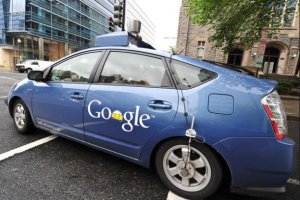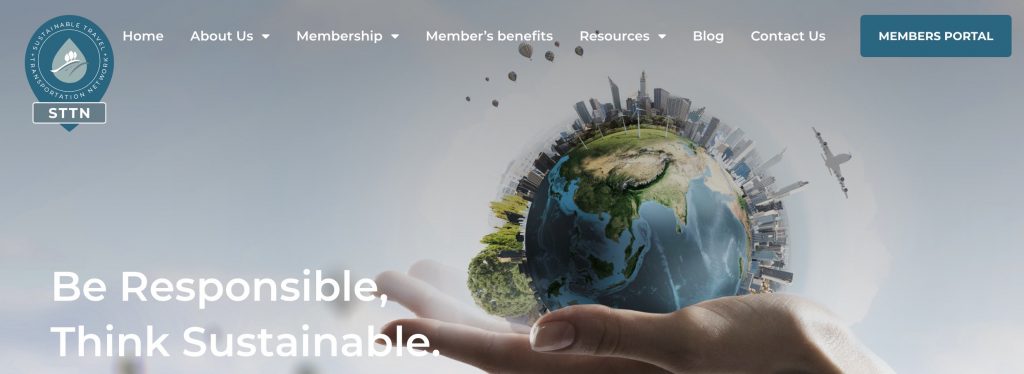
Sustainable Travel & Transportation Network was launched on April 24, offering a community-based marketplace that provides a platform for users to meet carbon emissions targets and find travel partners committed to sustainable operations and services. STTN provides comprehensive resources for companies to create sustainable travel supply chains. The company provides training, resources, and opportunities for participating members to build greater efficiencies, better-managed procurement processes, and the ability to integrate sustainability as a core business value and goal in the travel, transportation, and tourism sectors. STTN works from a comprehensive vision of what sustainability means for network members — environmental, social, and economic factors that are expected to be reached by stakeholders including customers, board members, shareholders, and governing bodies.
The company’s co-founders are Sara Richardson, previously the founder and president of non-profit business development association RAS International; and Patricia Charla, previous co-founder for environmental certification and consultancy Tech360. Faculty for training programs include sustainable travel consultancy TravelHorst founder Horst Bayer and IGManagement managing director Bernard Harrop; sustainability software GreenFeet founder Lisa McKelvey is also part of the company’s leadership team.
STTN is designed for corporate travel managers, travel management companies and travel agencies, accommodation and destination service providers, sustainability officers, transportation service providers, and other service providers and supporters, to meet environmental, social and governance (ESG) goals through efficient, achievable, and durable practices. Participating members will be guided and supported in how to achieve STTN certification, which complies with carbon offsets that must be measurable, monitored over time, and validated by an independent third party, the United Nations (UN), or a government body. For more information, visit the website at www.sttnetwork.com.
Details on the new EPA proposed vehicle emissions standards: What’s distinct about the new proposed set of emissions guidelines for passenger and commercial vehicles announced this month by EPA administrator Michael Regan? By 2032 about two-thirds of new passenger vehicles will have to be zero emissions — which mean battery- and fuel cell-powered vehicles. Internal analysis found that with nearly 70 percent EVs sold by 2032 and about 40 percent in medium-duity vehicles would be a pathway for successfully complying, Medum-duty breaks out to vehicles in the 8,501 to 14,000 pound range. It can also be heavy-duty vehicles such as semi trucks, tractors, buses, cherry pickers, and delivery vans. The end goal is to reduce close to 10 billion metric tons of carbon-dioxide emissions.
There are currently loopholes in the EPA first draft that favor SUVs and crossovers, which have been very popular in US new vehicles sales — up there with pickup trucks. Overall, the federal government and lawmakers face that age-old question: If you build it, will they come? Will car shoppers be buying them? EVs tend to be more expensive than their gasoline-powered equivalents, and with interest rates going up, it’s getting more costly to borrow money to buy a new car or truck.
Climate Investments: For those interested in tapping into California’s vast financial resources supporting clean transportation, you might want to attend California Air Resources Board’s (CARB’s) virtual public workshop on funding guidelines for agencies that administer California Climate Investments. California Climate Investments implemented nearly 19,500 new projects through $1.3 billion in funding in 2022 alone, with $933 million directly benefiting disadvantaged communities and low‑income communities and households, according to the state. This workshop takes place May 8, 2023, at 2:00 pm PST.
Renewable NG tax credit introduced: Rep. Linda T. Sánchez, D-Calif., and Rep. Brian Fitzpatrick, R-Pa., earlier this month introduced the Renewable Natural Gas Incentive Act, which would provide a tax credit for renewable natural gas that is used in heavy-duty vehicles in order to immediately reduce greenhouse gas and particulate emissions while further supporting clean and efficient transportation across the country. “This tax credit will allow transit agencies, school districts, freight haulers and package delivery companies to replace aging fleets with sustainable alternatives, all without slowing production or increasing costs,” Sánchez said.
ACT Expo just around the corner: John O’Leary, president and CEO of Daimler Truck North America (DTNA) will be the opening keynote speaker at the 12th annual ACT Expo, May 1-4, 2023, at the Anaheim Convention Center in Southern California. DTNA is North America’s largest manufacturer of Class 5-8 commercial vehicles and aims to offer an exclusively CO2-neutral new vehicle product line by 2039.
O’Leary’s keynote on Monday, May 1, will be followed by the debut of the 2023 State of Sustainable Fleets market brief report, which will highlight key trends and the ever-increasing clean vehicle adoption plans of fleets across the nation. Learn more about media events to hear about breaking industry news and to witness new product reveals and vehicle unveilings.

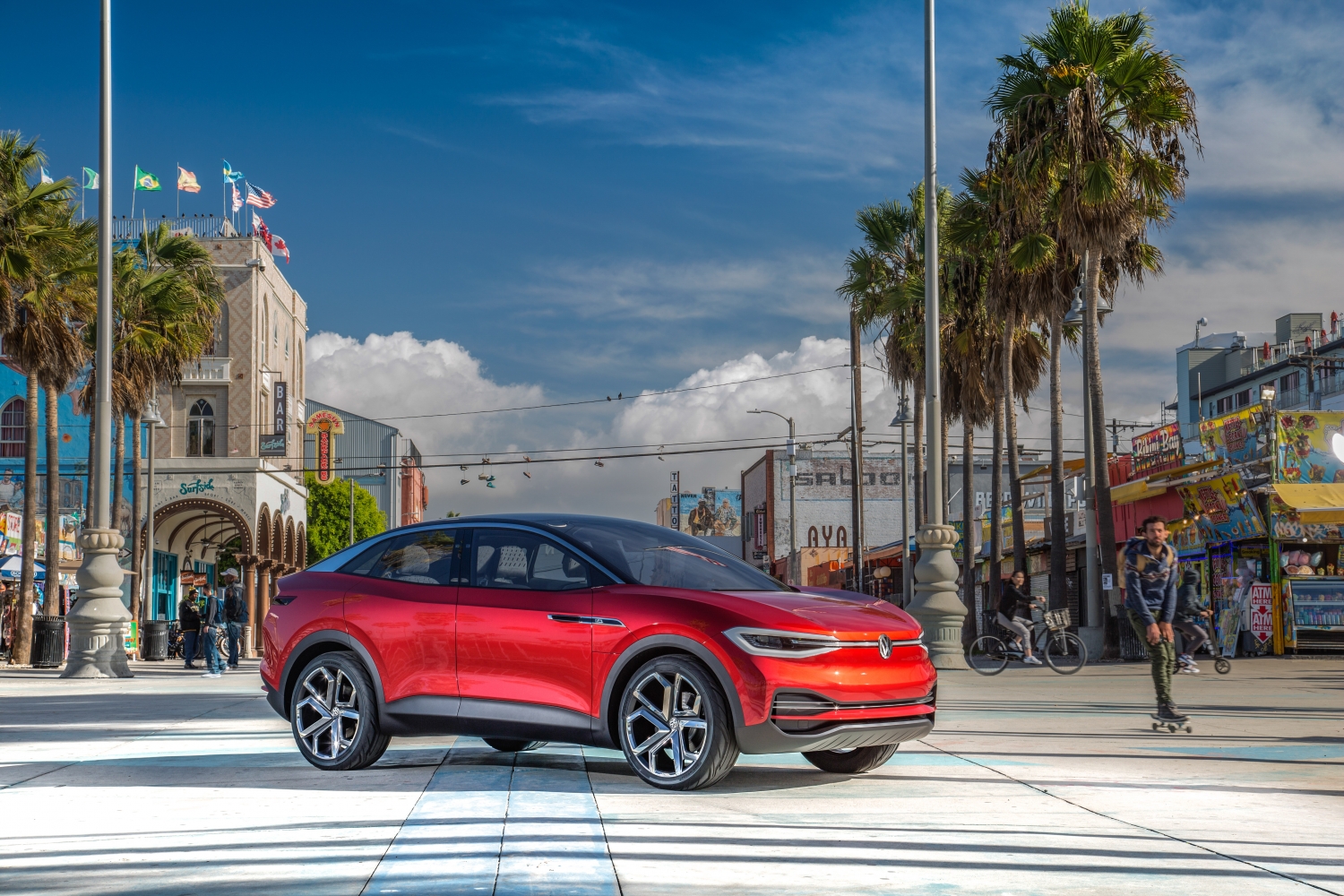 crossover based on its I.D. Crozz concept will be available in 2020. An 83-kWh lithium-ion battery pack with a pair of electric motors, one on each axle, will produce a combined 302 horsepower and an anticipated range of 300 miles. The I.D. Crozz will precede the I.D. Buzz microbus by about two years. The two were shown together with the I.D. concept car for the first time in North America…………… Two fledgling Tesla-competitors are facing contrasting scenarios, with Lucid Motors pulling ahead and Faraday Future struggling to raise funds.
crossover based on its I.D. Crozz concept will be available in 2020. An 83-kWh lithium-ion battery pack with a pair of electric motors, one on each axle, will produce a combined 302 horsepower and an anticipated range of 300 miles. The I.D. Crozz will precede the I.D. Buzz microbus by about two years. The two were shown together with the I.D. concept car for the first time in North America…………… Two fledgling Tesla-competitors are facing contrasting scenarios, with Lucid Motors pulling ahead and Faraday Future struggling to raise funds. 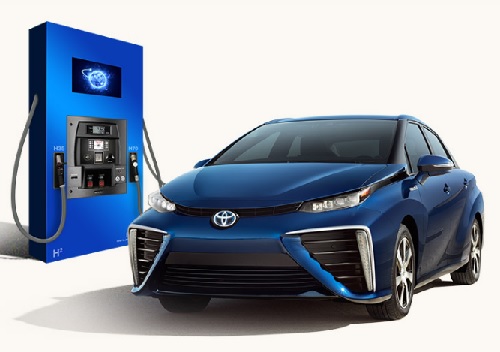 vehicles is going down he path of backing the Betamax over VHS in the 1980s,
vehicles is going down he path of backing the Betamax over VHS in the 1980s,  demonstration to begin in the next few months. The study will examine the passenger experience during self-driving rides as the electric cars travel through certain neighborhoods in Boston. Lyft has been forging other alliances in the autonomous vehicle front – including an upcoming project with shareholder General Motors and another one with Waymo. Ride-hailing giant Uber had taken the lead on that front starting last year with a Pittsburgh pilot project that included passengers getting rides; but Uber has distanced itself from Pittsburgh and is focusing on test rides in Arizona.
demonstration to begin in the next few months. The study will examine the passenger experience during self-driving rides as the electric cars travel through certain neighborhoods in Boston. Lyft has been forging other alliances in the autonomous vehicle front – including an upcoming project with shareholder General Motors and another one with Waymo. Ride-hailing giant Uber had taken the lead on that front starting last year with a Pittsburgh pilot project that included passengers getting rides; but Uber has distanced itself from Pittsburgh and is focusing on test rides in Arizona.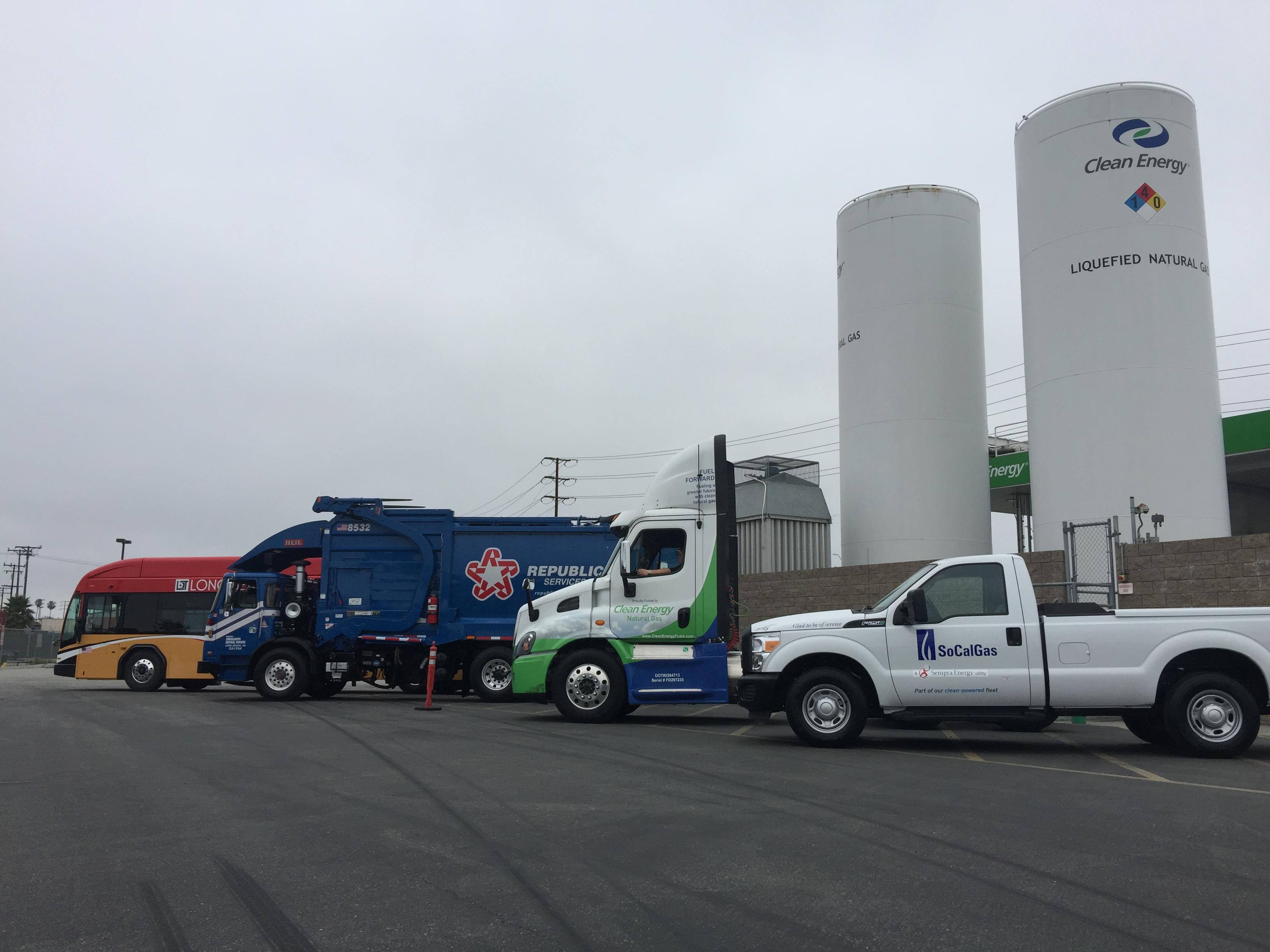 from California to Washington, D.C. The trip was kicked off by representatives from the California Natural Gas Vehicle Coalition (CNGVC), which is calling for the adoption of low nitrous oxide emissions heavy-duty truck technology powered by renewable natural gas in the Clean Air Action Plan of the San Pedro Bay Ports. That, called
from California to Washington, D.C. The trip was kicked off by representatives from the California Natural Gas Vehicle Coalition (CNGVC), which is calling for the adoption of low nitrous oxide emissions heavy-duty truck technology powered by renewable natural gas in the Clean Air Action Plan of the San Pedro Bay Ports. That, called  Reactions to Trump on Paris climate accord: Cities, states, and major corporations are staying committed to backing the Paris climate change agreement after President Donald Trump said yesterday that the U.S. will be leaving it. Tesla CEO Elon Musk is stepping down from Trump’s economic advisory panel over it, while Apple, Google, Twitter, Amazon, Facebook, Microsoft, IBM, and other companies have issued statements that climate change is an urgent threat that requires a global effort to combat. As of yesterday, an unnamed group that includes 30 mayors, three governors, more than 80 university presidents, and more than 100 businesses, has gone directly to the U.N. to back the Paris climate accord.
Reactions to Trump on Paris climate accord: Cities, states, and major corporations are staying committed to backing the Paris climate change agreement after President Donald Trump said yesterday that the U.S. will be leaving it. Tesla CEO Elon Musk is stepping down from Trump’s economic advisory panel over it, while Apple, Google, Twitter, Amazon, Facebook, Microsoft, IBM, and other companies have issued statements that climate change is an urgent threat that requires a global effort to combat. As of yesterday, an unnamed group that includes 30 mayors, three governors, more than 80 university presidents, and more than 100 businesses, has gone directly to the U.N. to back the Paris climate accord. 


